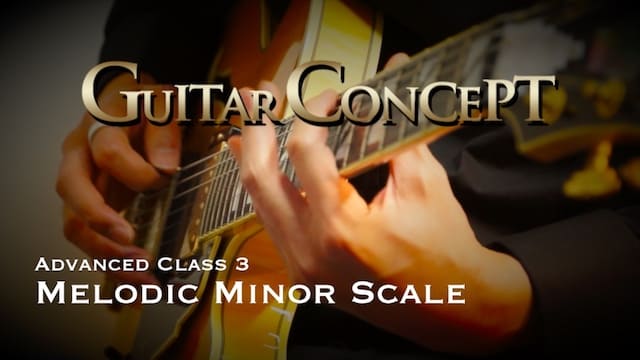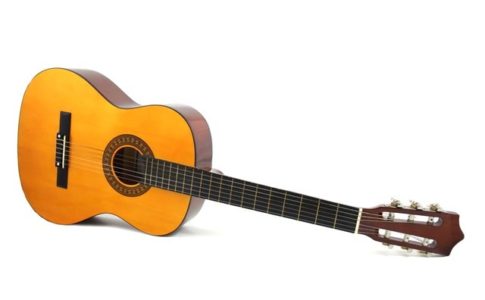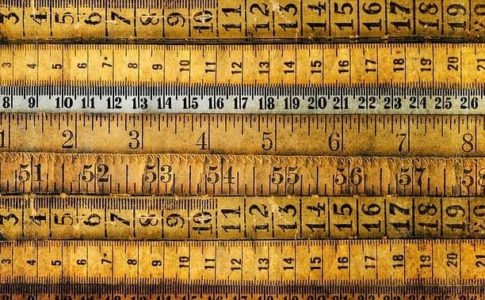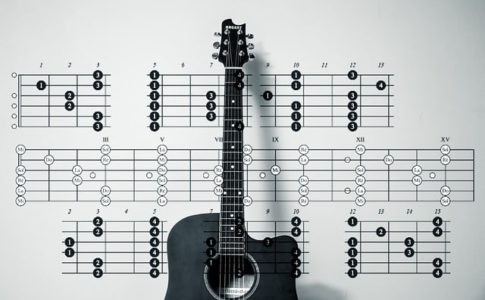Which scale matches with what chord will now be described.
Contents
Lydian ♭7 scale
Let’s start from Lydian ♭7 scale played from the fourth note in the melodic minor.
This scale goes perfect with “dominant 7th” chords.

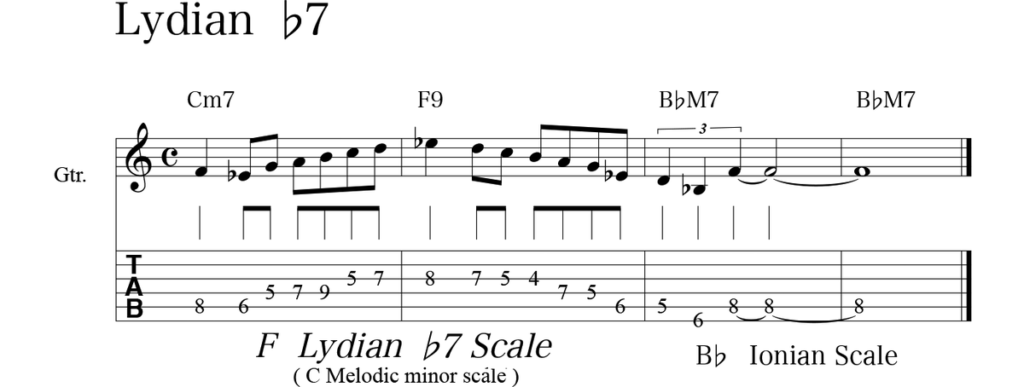
In such a chord progression, use Lydian ♭7 scale in the first and the second bars. The scale can be also used for intros and one chord improvisation.
If you want, you can also use the scale in “dominant 7th” chords resolving to “Im7”.
Whatever you play on a “dominant 7th” chord will be a tension note, so you should not strictly stick to chord tones.
You can simply remember F lydian ♭7 as a melodic minor, perfect fifth above (C melodic minor), rather than a scale obtained by playing the C melodic minor from the fourth note, or playing B Altered scale from the fifth note.
So, you can get G lydian ♭7, by playing the melodic minor played from the perfect fifth above G, that is, “D melodic minor”
Tip for playing the scale
First, pick up three or four notes in a scale to create phrases and gradually increase the notes.
Altered scale
Next, let’s study “Altered scale” that is a melodic minor played from the 7th note.
This scale can also be used in dominant 7th chords., especially in “Ⅱ-Ⅴ-Ⅰ” progression.


The scale can be used in the second bar as Ⅴ7 alt, but can be also used in the first bar.
Let’s take F altered scale (aka F super locrian scale) as an example.
F altered (F super locrian) scale

The scale is obtained by playing the F# Melodic minor scale (G♭Melodic minor scale) from the seventh note.
Complicated?
Well there is a very easy way to remember.
Just remember it as “melodic minor half step above”, rather than the melodic minor scale played from the fourth note of B lydian ♭7.
So, if you see chords like “F7(#9,♭13)” or “F7(♭9)”, you can get the altered scale by playing “F# G♭” melodic minor scale.
Let’s study how the scales actually sounds in the next chapter.
